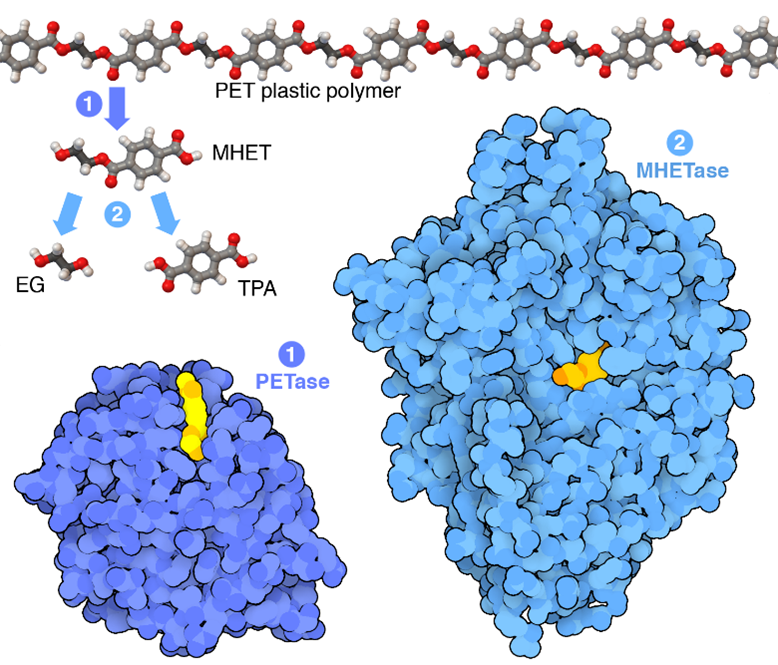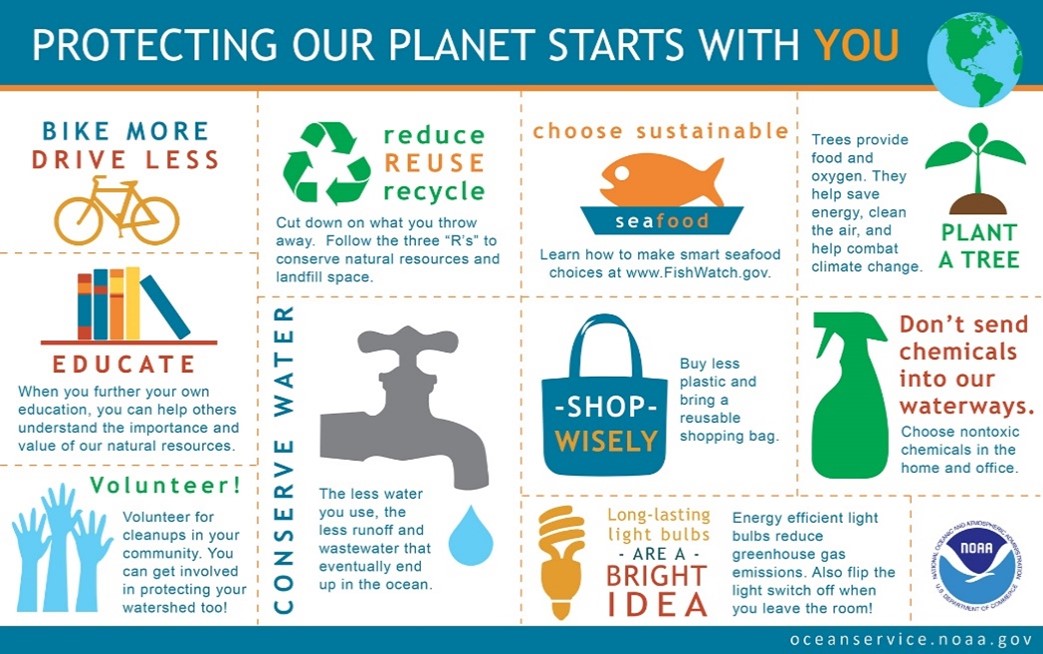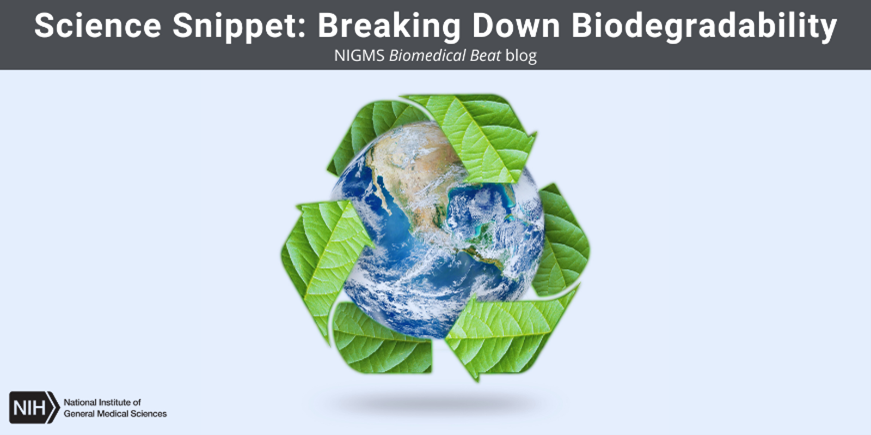Have you ever noticed plastic utensils or paper plates labeled as “biodegradable” and wondered what that meant? Materials are biodegradable when microorganisms such as bacteria can break them down into their building blocks.
Biodegradable Plastics
Plastic is everywhere: Milk jugs, grocery bags, and takeout containers are just a few examples. There are many types of plastic, but they’re all made up of long chains of repeating subunits called polymers. These polymers are designed to be durable and resistant to factors like heat, sunlight, and water, which makes them useful in a variety of situations.

Credit: David S. Goodsell and the RCSB Protein Data Bank.
Traditional plastics take hundreds of years to break down naturally and end up in landfills and waterways. There, they pose a danger to wildlife who unknowingly ingest them, potentially blocking or tearing parts of their digestive systems and causing other issues. And sometimes, traditional plastic debris breaks down into tiny particles called microplastics that humans and other organisms can inhale or ingest. We don’t know how microplastics affect human health yet, but scientists are working to design new types of plastic and methods to recycle them to avoid any potential harmful effects.
Replacing traditional plastic with biodegradable plastic is one way to reduce its impact on the earth. Through the process of biorecycling, bacteria release enzymes that break down biodegradable polymers into their subunits. From there, the bacteria can take up these subunits and further break them down for energy through the process of metabolism.
Scientists can produce large amounts of these bacterial enzymes in the laboratory, and recycling facilities can use them to break down plastic waste through biorecycling without the need for live bacteria. Such facilities can then harvest the plastic subunits and repurpose them into different items, reducing the need for new plastic.
Similar to biodegradation, composting is the biological decomposition of carbon-based matter by microorganisms. Food scraps (like banana peels), grass clippings, and leaves are great composting materials. Their breakdown creates a nutrient-dense soil additive called compost, perfect for growing crops. Although plastics that can be broken down into compost exist, they must be composted at commercial facilities. At-home compost piles don’t usually meet the specific conditions (like temperature) needed to break them down. If you’re interested in how to start composting, check out these tips from the Environmental Protection Agency.
Ongoing Research
Scientists are working to create new types of biodegradable plastic that can be broken down more easily. They’re also searching for more bacterial species with the ability to break down plastic so they can identify the enzymes that do the work and increase the efficiency of biorecycling at recycling centers.
NIGMS-funded researchers are exploring:
- The impact of microplastics on our health. Microplastics have been found within human tissues, including the placenta, but their impact on maternal and fetal health is unknown.
- Ways that research organisms can help scientists investigate the effects of plastic on the body.
- The use of biodegradable polymers to prevent scarlike tissue called adhesions from forming in the body after surgery.
- Small changes to the molecular structures of existing plastics to turn them into a more sustainable type of plastic or a material of higher value, a process called upcycling. (Check out our blog post about Frank Leibfarth, Ph.D., to learn more about his research in this area.)

Credit: National Oceanic and Atmospheric Administration.
Although most of us aren’t involved in biorecycling and upcycling research, we can all help the planet by limiting how much plastic we use.

Learn more in our Educator’s Corner.







